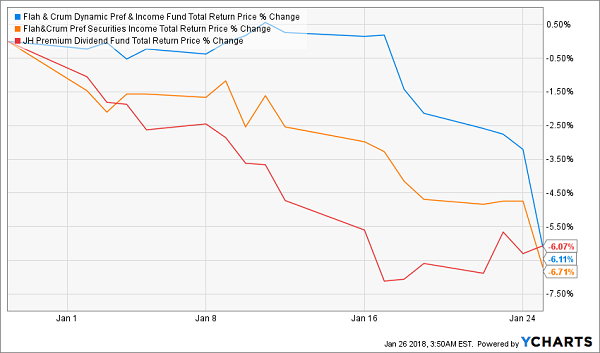The Federal Reserve’s increased aggression over the past couple of years has finally come home to roost. The yield on the 10-year Treasury recently rocketed above 2.8% – a four-year high – while the 30-year cleared the 3% mark.
That’s bad news for investors in many traditional dividend-paying blue chips.
The 10-year T-note might as well have been a “high-yield” savings account the past few years, offering almost laughable income of less than 1.4% as recently as 2016. That kind of environment gives investors “yield goggles,” making even no-growth stocks look attractive as long as they’re paying out near 3%.
Just look at the performance of the Consumer Staples Select Sector SPDR (XLP) – a collection of companies such as Procter & Gamble (PG) and Coca-Cola (KO) – against the 10-year Treasury rate.…
Read more





Recent Comments